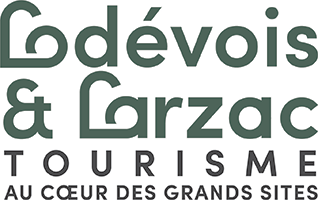The grape varieties
Cépages list
-AOC Languedoc Cabrières : grenache noir, syrah noir, carignan noir, cinsault noir, morrastel noir, mourvèdre noir, bourboulenc, clairette blanc, grenache blanc, marsanne blanc, roussanne blanc, terret blanc, vermentino blanc and viognier blanc
-AOC Languedoc Saint Saturnin : grenache, mourvèdre, syrah, carignan, cinsault
-AOC Languedoc Montpeyroux : The appellation requires a minimum of three varieties among : syrah, grenache,mourvèdre, carignan, cinsault
-AOC Grès de Montpellier : grenache, mourvèdre, syrah, carignan
-AOC Clairette du Languedoc : clairette blanche
-AOC Languedoc Pézenas : The appellation requires a minimum of two varieties among : grenache, mourvèdre, syrah, carignan, cinsault.
-AOC Terrasses du Larzac : Syrah, carignan, cinsault, mourvèdre, grenache



Types of vine
The grape type constitutes an important reference on a wine list. Knowing the grape type used is interesting for the consumer, since it provides essential information on the particular taste and character of the wine.
The grape type is a vine plant variety that has its own character and which is adapted to a specific soil and climate type. The grape types fall into three categories: red, grey or rosé and white. Identifying each grape type implies observing its morphology, such as the colour of the buds or berries, the shape of the leaves or the small branches and the size of the bunches. This study is called ampelography.
Over 6,000 grape types exist in the world, all different due to their:
taste: varying degrees of acidity and sugar, and producing diverse flavours;
colour: their skin can be white or coloured, just like the pulp;
size: generally-speaking, fresh grapes for the table are larger and plumper than grapes used for wine-making.
In each wine-growing region, we find the most adapted grape type, not forgetting that the economic and consumption factors play a major role when choosing a grape type. AOC, origin-controlled wines may be composed of one or several grape types; the “Clairette du Languedoc” [sparkling white wine], for example, only contains the “Clairette” grape and is elaborated using the full Ancestral “Blanquette” Method, introduced by Mauzac.
The vineyard in the Languedoc has been substantially restructured over the past 30 years in order to encourage such Mediterranean grape types as Grenache, Mourvèdre or Syrah, the star of all new plantations. In addition, applied research has enabled enhanced adaptation of the traditional grape types and improved cultivation. Separate vinification of the grape types, in accordance with their ripening and their reaction in the vat, is the basic rule. Upon completion of vinification, wine-growers concentrate on assembling the wine types.






